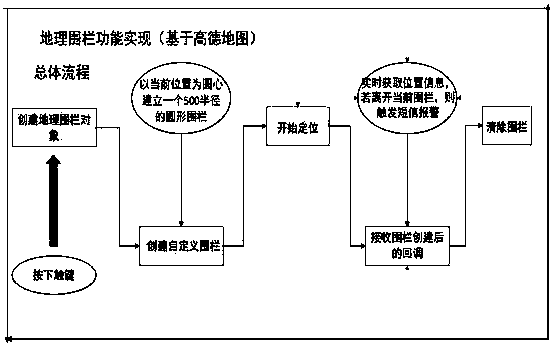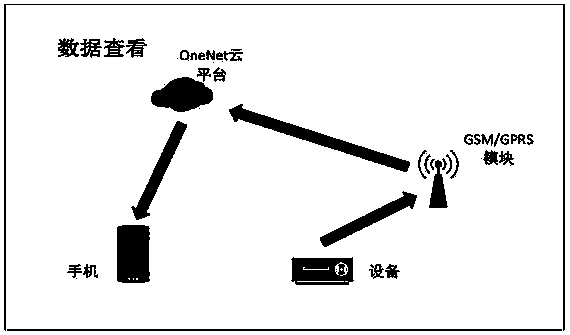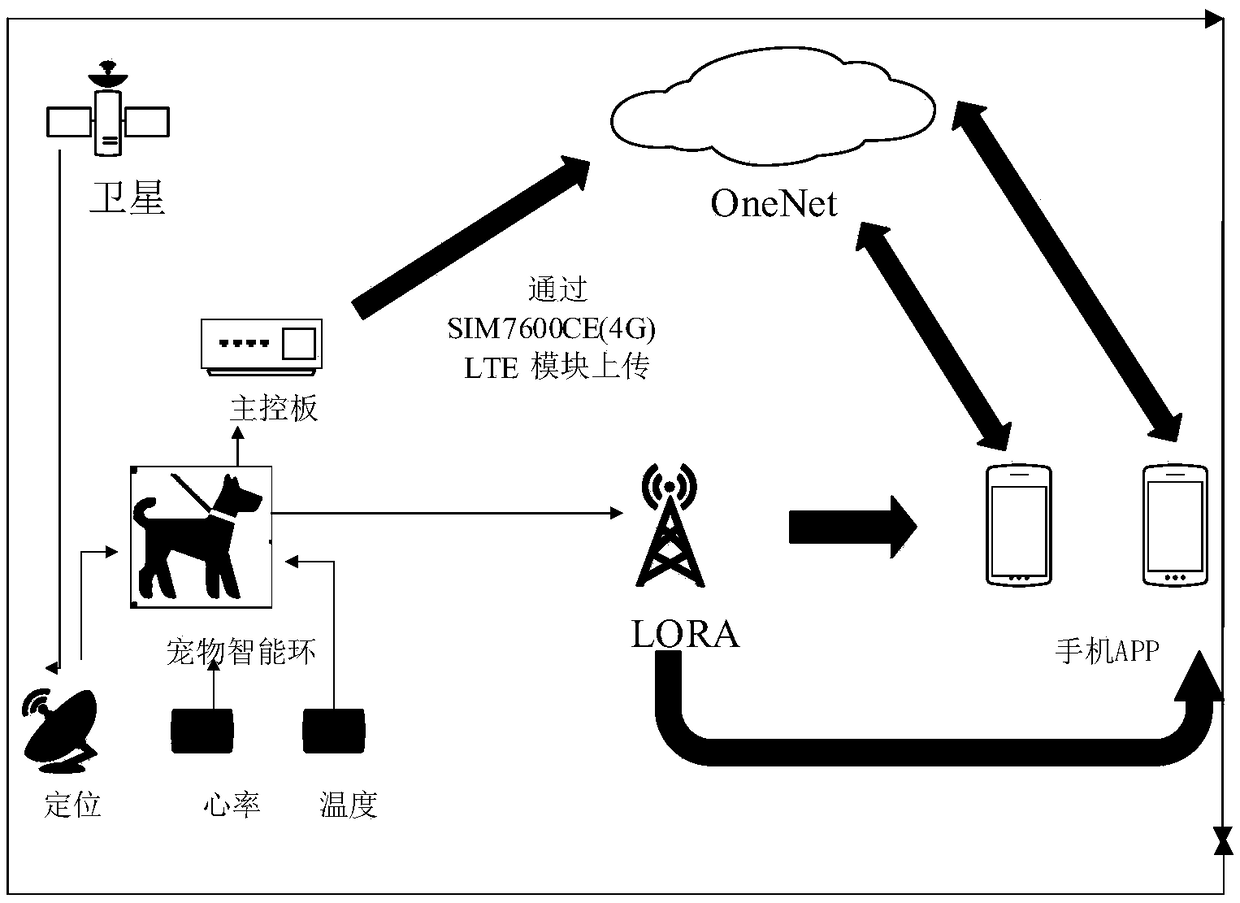Smart pet ring, and pet monitoring system and monitoring method
A monitoring system and pet technology, applied in the field of smart pet rings, can solve the problems of pet loss, not being well resolved, lack of pet intelligent monitoring, etc., and achieve the effect of complete functions and easy implementation
- Summary
- Abstract
- Description
- Claims
- Application Information
AI Technical Summary
Problems solved by technology
Method used
Image
Examples
Embodiment 1
[0057] Embodiment 1: In view of the loss of pets, the occurrence of emergencies, and the continuous improvement of consumers' requirements for breeding, relevant coping technologies are proposed. The specific functions of the smart pet ring include:
[0058] ①: Intelligent positioning of pets: Consumers can use this function to accurately locate pets anytime and anywhere. It can not only prevent pets from being lost, but also find them conveniently.
[0059] ②: Electronic fence: Consumers can use this function to set the maximum range of activities for pets. If the pet's activities exceed the range, an alarm will be sent to the consumer. If the location mode is not turned on, the location will be automatically turned on.
[0060] ③: Information matching: It is equivalent to the exclusive certificate of pets. Part of the information and contact information of consumers (pet owners) and related information of pets can be obtained by scanning the QR code.
[0061] ④: Real-tim...
example
[0144] Tobj1=>Config Reg[5:4]=11'b
[0145] Tomin=0℃=>Tomin[EEPROM]=100*(tomin+273.15)=6AB3h
[0146] Tomax=+50℃=>Tomax[EEPROM]=100*(tomax+273.15)=7E3Bh
[0147] The captured PWM high level time is 0.495*T=>t2=(0.495–0.125)*T=0.370*T=>
[0148] Measured object temperature = 2X0.370*(50°C-0°C)+0°C=+37.0°C.
[0149] (4) Formulate the temperature output range of PWM
[0150] The calculated object temperature is stored in RAM with a resolution of 0.01°C (16bit). The PWM output format is a 10-bit value, so the temperature to be transmitted needs to be rescaled to fit the desired range.
[0151] For this, 2 cells in the EEPROM are used to access the range of To (To min and To max ), one unit for Ta(Ta range : 8MSB to store Ta max , 8LSB for Ta min )
[0152] Therefore, the change accuracy of the To output range is 0.01°C, and the corresponding change accuracy of the Ta output range is 0.64°C.
[0153] The object temperature in PWM output format can be rescaled using the f...
PUM
 Login to View More
Login to View More Abstract
Description
Claims
Application Information
 Login to View More
Login to View More - R&D
- Intellectual Property
- Life Sciences
- Materials
- Tech Scout
- Unparalleled Data Quality
- Higher Quality Content
- 60% Fewer Hallucinations
Browse by: Latest US Patents, China's latest patents, Technical Efficacy Thesaurus, Application Domain, Technology Topic, Popular Technical Reports.
© 2025 PatSnap. All rights reserved.Legal|Privacy policy|Modern Slavery Act Transparency Statement|Sitemap|About US| Contact US: help@patsnap.com



